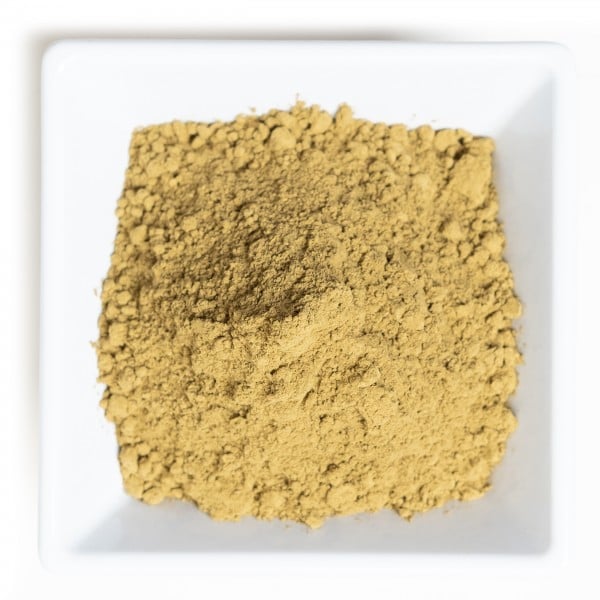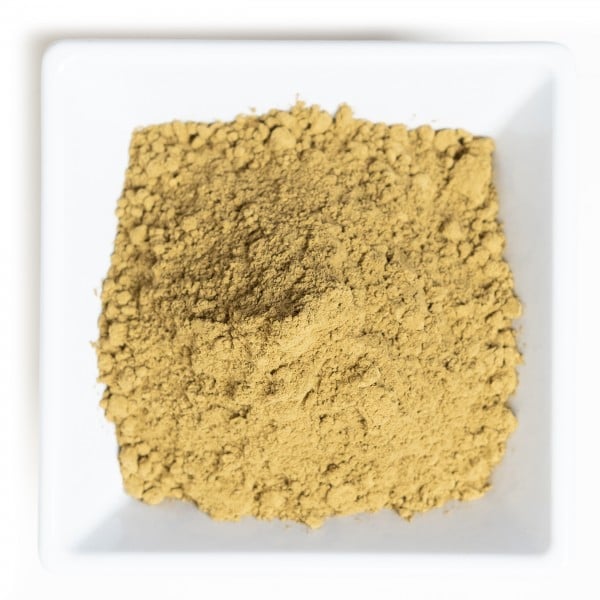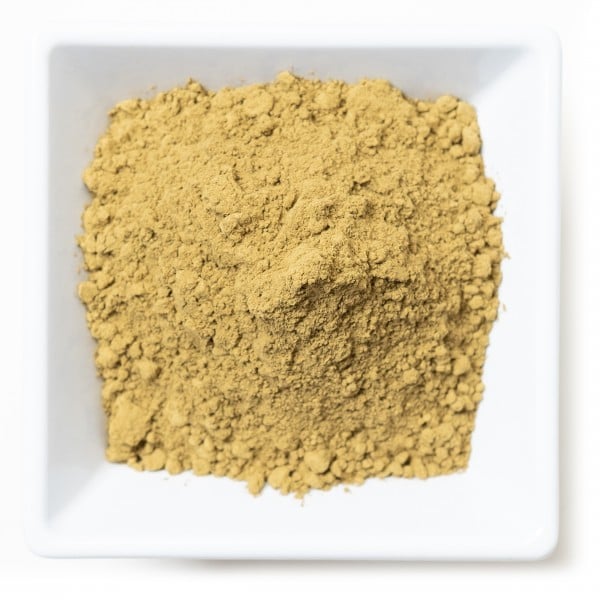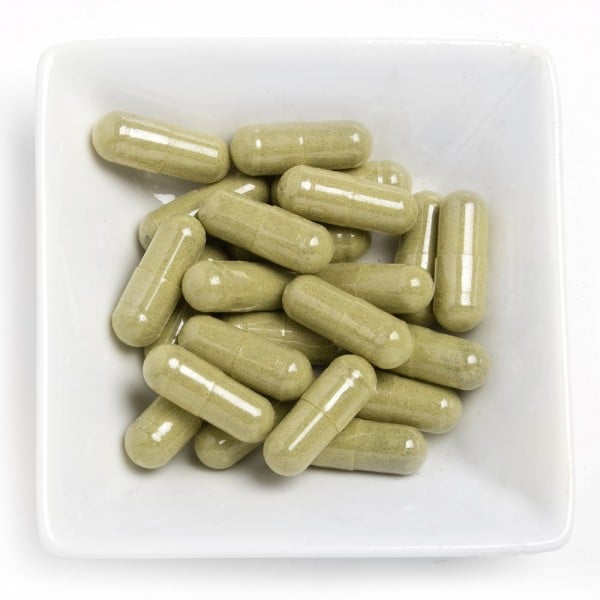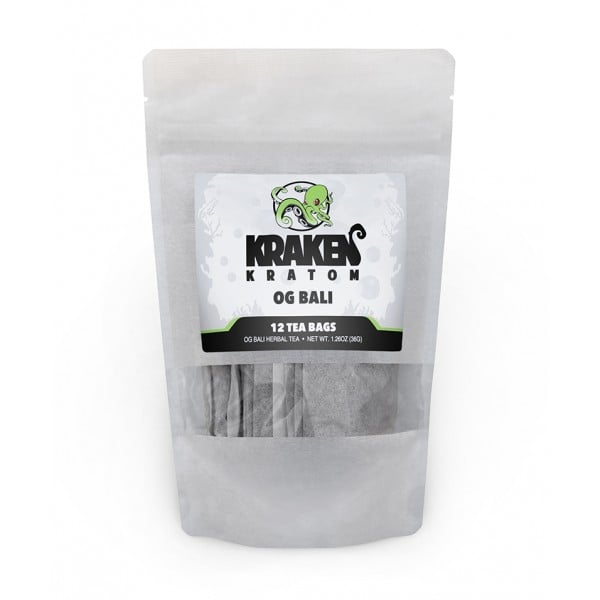Yellow Vein Kratom Strains
Yellow vein strains get their color not from carefully timed harvesting, but from a distinctive small-batch drying process. Popular in Thailand and Vietnam, this process begins with carefully selected leaves with mature alkaloid profiles, typically green vein leaves. The leaves are then spread on drying racks and left exposed to direct sunlight for several days. As their chlorophyll begins to break down, the leaves undergo chlorosis: a yellowing due to diminished chlorophyll levels. This is a time-intensive process, which accounts for the relative scarcity of yellow vein Kratom products. The result is a product whose alkaloid profile reflects the time it takes to create this specialized variety. Yellow vein Kratom takes on a rich golden or coppery color.
As Kratom becomes increasingly popular, marketing-savvy producers have taken the traditional color-based naming system and run with it. Yellow vein strains that begin with white Kratom leaves might be labeled Gold or Platinum, for example. Behind the marketing hype, though, lie the same factors that have always contributed to Kratom’s rich array of varieties: growing conditions, harvest time, and drying methods. The more you know about how your Kratom was produced, the more likely you are to get exactly the product you want.
How Does The Curing & Drying Process Impact Vein Color?
The Kratom drying and curing process is a fascinating, multi-step endeavor that greatly influences the vein colors of the resulting product. Traditionally, after the Kratom leaves are harvested from the Mitragyna speciosa tree, they are subjected to specific drying procedures that can include being laid out in the sun, placed under shade, or even put into specialized drying chambers. The duration and conditions of this drying process can cause the leaves' vein colors to change, turning them into the familiar red, green, yellow, or white varieties that you see in the marketplace.
There's a lot of discussion and speculation among enthusiasts about how exactly these drying techniques impact the vein colors of Kratom leaves. While some assert that the colors are indicative of how mature the leaves were at the time of harvest—red being the most mature, white the least, and green somewhere in the middle—others argue that it's the unique drying procedures that determine the final color. Factors like exposure to sunlight, indoor versus outdoor drying, and the length of time spent drying can all play roles in shaping the vein color of the end product. Regardless, the drying and curing process is an integral part of what makes each Kratom strain distinct.



